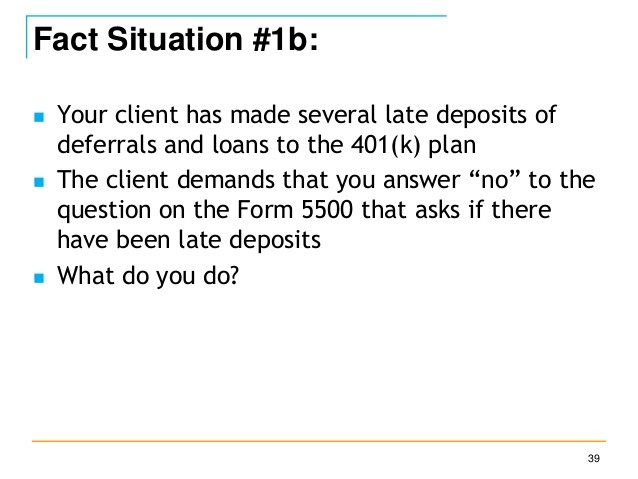401(K) Plans Facts You Should Know
Post on: 16 Март, 2015 No Comment

Today, millions of people prepare for retirement by setting aside money in 401(k) plans offered at work. On the surface, it seems simple enough. As a defined-benefit retirement plan, you set aside part of your income that’s then invested to build your savings for the future. But beyond that basic premise, 401(k) plan facts differ greatly, which makes it essential to evaluate your plan and its options to make sure your plan will work for you.
Who can use 401(k) plans?
To participate in a 401(k) plan, you must be an employee of a company that sponsors such a plan for its workers. If you don’t work for a company that sponsors a 401(k) plan, or if you don’t like your 401(k) plan rules, you should consider saving and investing for retirement in a self-directed individual retirement account (IRA) instead.
If you have a 401(k) plan at work, then you’ll need to follow a three-step process in order to get up and running. First, you have to fill out the paperwork or online sign-up forms provided by your employer. Next, you should plan to attend the orientation sessions or read the orientation material provided by your employer so you can fully understand how 401(k) plans work.
The orientation materials are provided by the 401(k) plan providers, which are the companies that oversee the administration and investments of the plan. Rules will vary from provider to provider-a Fidelity 401(k) will have different rules and investment choices than a Merrill Lynch 401(k), and the available investments can vary from employer to employer as well. Find out as much about the plan as possible; if you were unhappy with the investment choices at your last job, you may find better ones at a new job, even if both plans are offered by the same provider.
After you’ve signed up and reviewed the 401(k) plan facts, you’ll need to decide how much of your income to set aside each payday. There can be tax benefits to contributing, and your employer may match your contributions dollar for dollar up to a certain limit. This means that for every dollar you contribute, your employer contributes a dollar as well. It’s a good idea to contribute at least as much as your employer will match; otherwise, you’re leaving free money behind.
Finally, you must choose the specific investments you’ll use to help pursue your goal of accumulating money for retirement. Most 401(k) plans will give you a choice of stock, bond and money market mutual funds, allowing you to create an investment mix that reflects your comfort level with risk. You can stop contributing to the plan at any time by simply notifiying your employer.
Tax benefits of 401(k) plans
There are two types of 401(k) plans: traditional 401(k) plans and Roth 401(k) plans. Each has unique features and tax advantages.
Traditional 401(k) plans provide two primary benefits: the ability for you to make pretax contributions of income and the ability to invest that money in a tax-deferred account. Pretax contributions to 401(k) plans mean that the money you set aside for retirement is deducted from your paycheck before income tax is withheld. This reduces your taxable income because taxes are only deducted on your post-contribution pay.
For example, a person in the 20% tax bracket earning $1,000 each payday would normally have $200 withheld from his or her paycheck for taxes. But if that person makes a $100 contribution to a 401(k) plan every payday, then his or her taxable income is reduced by that amount, to $900. As a result, his or her tax withholding would be just $180. Any amount you contribute in excess of your plan’s limits does not qualify for tax deductions.

Tax-deferral in traditional 401(k) plans means that any investment gains in your account are spared from taxation until you make withdrawals. By keeping the tax man’s hands out of your account, you may be able to accumulate more money in a 401(k) plan than you could by investing in a fully taxable account. The money held in 401(k) plans will be taxed when you withdraw it during retirement at then-current income tax rates.
Roth 401(k) plans don’t allow pretax contributions. You’ll pay regular income taxes on your total income, including the money you put in a Roth 401(k). However, qualified withdrawals from a Roth 401(k), typically withdrawals made during retirement, are tax-free.
This leaves you with a choice to make. Traditional 401(k) plans give you tax advantages now but none in retirement. However, if you’re in one of the highest tax brackets now, a traditional 401(k) may be a better choice, because your income tax rate is likely to be lower in your retirement years. If you have significant retirement savings or assets that you can draw on, you’ll find the future benefits of tax-free Roth 401(k) withdrawals a better choice.
It’s worth noting that traditional 401(k) plans are still far more prevalent than Roth 401(k) plans. Therefore, when people refer simply to 401(k) plans, you can generally assume they’re referring to traditional 401(k) plans.
What is a 401(k) rollover?
A 401(k) plan is portable, so you can take your savings, including any employer matching contributions that have vested, with you. You may have as many as four options for what to do with the money:
- Leave it in the current plan. Some employers won’t allow this, but it’s the best choice if you like your current investment mix, since you won’t pay any fees.
- Use a rollover 401(k). This option lets you transfer your savings from your previous plan to the plan offered by your new employer. If the investment options in the new plan are different, you may incur some fees as you sell your old plan shares and buy new ones.
- Use a rollover IRA. This works in the same way as a rollover 401(k), but the money is transferred to an Individual Retirement Account that you can control independent of your employer. You’ll pay fees as you move the money, but you won’t face any tax or early withdrawal penalties.
- Cash it out. This is the least-attractive option. You’ll get a check for the value of your savings, but you’ll pay income taxes on the amount as well as an early withdrawal penalty if you haven’t reached retirement age.














